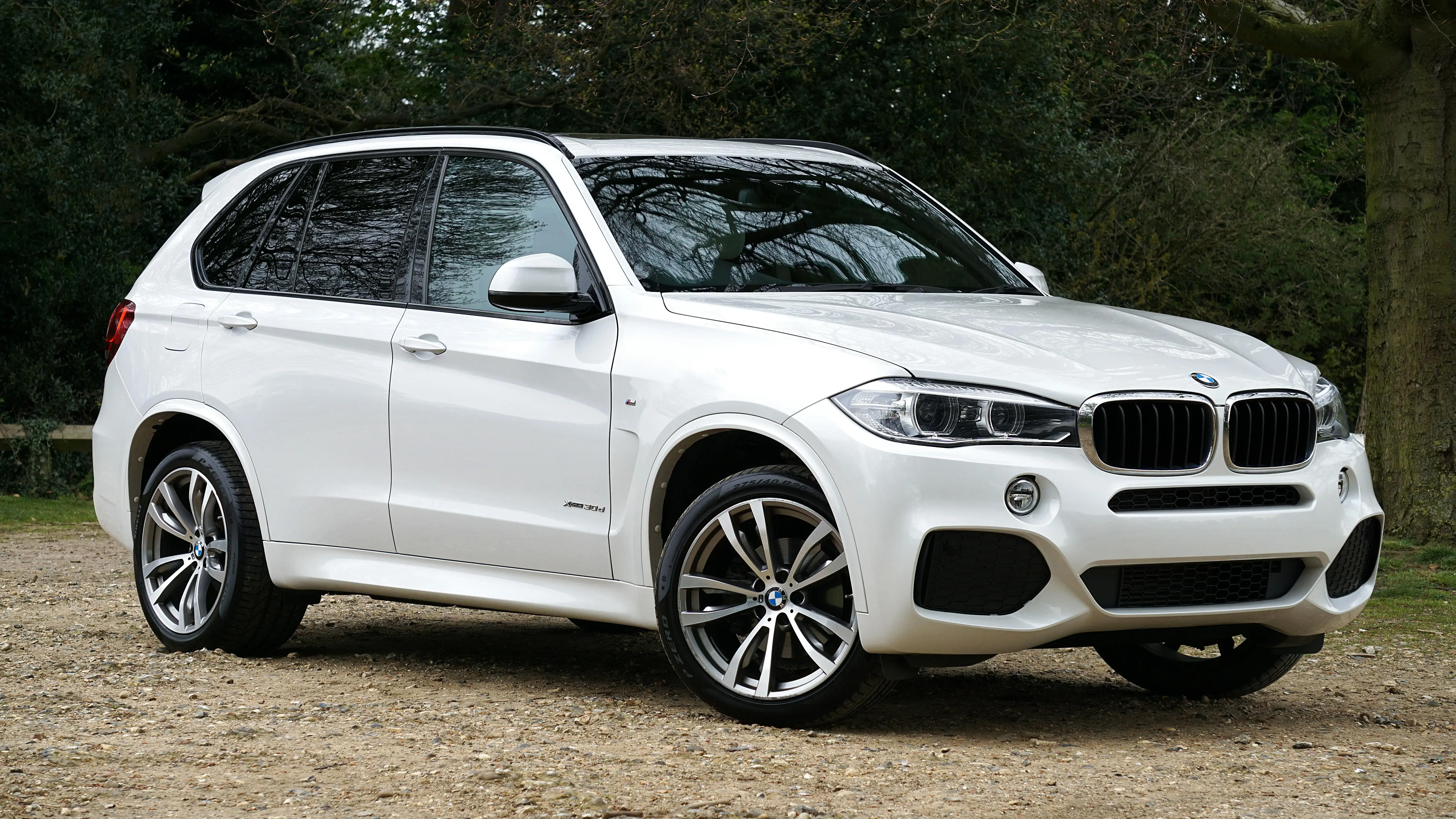How Much Does It Cost To Import A Car From Norway To The US In 2025?
Norway can be a great source for well-kept European vehicles—especially Volvos and other EU makes—plus distinctive Scandinavian classics. Vehicles sourced in Norway often benefit from strict inspection/maintenance standards, and North Sea routes offer reliable access to the U.S.
Key clarification: Tariffs are assessed by the vehicle’s country of origin and HTS classification, not by the exporting country. A German-built car bought in Norway is still German origin for duty/tariff purposes.
Why the full cost breakdown matters
Accurate budgeting requires a line-item view of tariffs/duties, EPA/DOT compliance, and fees/logistics. This guide covers 25-year classics (which can qualify for exemptions) and modern vehicles (which may need modifications).
Critical update on 2025 tariffs
-
Base duty (most passenger cars): 2.5% (HTS 8703.x).
-
10% baseline tariff (2025 update): May apply in addition to the base duty depending on origin and HTS.
-
Section 232 (finished vehicles): 25% for non-exempt countries/vehicles (confirm applicability at entry).
-
25-year exemption: Vehicles 25+ years old, when properly coded under HTSUS 9903.94.04, are exempt from the 25% Section 232 tariff and typically pay only the 2.5% base duty.
What this means: Depending on origin/content and HTS coding on CBP Form 7501, the duty load could be 2.5%, 12.5% (2.5%+10%), or up to 37.5% (2.5%+10%+25%).
Current shipping costs Norway → USA
-
Oslo/Fredrikstad/Bergen → New York: ~$2,750 with ~18-day transit (typical, not guaranteed).
-
Rate variability: Fuel surcharges, route congestion, equipment availability, seasonality, and carrier adjustments can move rates.
Ports & routing
-
Primary hub: Oslo (frequent container services, efficient handling).
-
Alternatives: Fredrikstad (south of Oslo), Bergen (west) with generally fewer direct U.S. sailings.
-
North Atlantic lanes: Typical East Coast transit ~18 days when schedules align.
Method & EV handling
-
Containers: Max protection; single-vehicle or consolidated (shared) options.
-
Consolidation: Can reduce per-car ocean cost up to ~50% when loads align.
-
EV specifics: Battery SoC management, DG paperwork, and temp control typically add ~$1,000–$2,000 to ocean costs for EVs.
Market factors
-
Fuel surcharges: Often add ~$200–$400.
-
Winter: North Sea weather can create occasional delays; modern schedules remain generally reliable.
2025 duties & established exemptions (Norway export lane)
-
Base duty (passenger cars): 2.5% (HTS 8703.x).
-
10% baseline tariff: May apply in addition (origin/HTS dependent).
-
Section 232 (finished vehicles): 25% for non-exempt cases.
-
25-year exemption: HTS 9903.94.04 exempts qualifying classics from the 25% Section 232; the 2.5% base duty still applies.
-
Light trucks (“Chicken Tax”): Certain 8704 light-truck classes carry a 25% Chicken Tax. Whether additional tariffs (10% and/or 25% 232) apply is not automatic—confirm via HTS coding on Form 7501.
Documentation & timing
-
Effective dates: Section 232 for finished vehicles April 3, 2025; automotive parts May 3, 2025 (can affect retrofit costs).
-
Recordkeeping: Maintain full files for five years; ensure Form 7501 shows base HTS and any exemption codes (e.g., 9903.94.04).
Mandatory processing fees (typical)
-
Harbor Maintenance Fee (HMF): 0.125% of the import entry’s value as determined for HMF purposes (confirm the valuation basis with your broker).
-
Merchandise Processing Fee (MPF): 0.3464% of entered value; min $31.67 / max $634.62.
-
Customs bond: Bond amount is often 10% of value; the premium you pay typically runs ~$150–$500 for a single entry.
Real-world duty scenarios
Classic vehicle example (NOK 350,000 / $32,000) — 25-year exemption qualified
-
Shipping (to NY): $2,750 (est.)
-
Duty (2.5%): $800 (Section 232 exempt via 9903.94.04)
-
HMF (~0.125%): ~$40.00
-
MPF (~0.3464%): ~$110.77
-
Bond premium: ~$320
-
Total duties & fees (plus shipping): ~$4,021 (illustrative; excludes inland U.S. delivery)
Modern vehicle example (NOK 550,000 / $50,000) — show three outcomes
-
Shipping (to NY): $2,750 (est.)
-
Scenario A (Base only): 2.5% = $1,250 → duties/fees+shipping ≈ $4,735
-
Scenario B (Base + Baseline): 12.5% = $6,250 → ≈ $9,735
-
Scenario C (Base + Baseline + Section 232, non-exempt): 37.5% = $18,750 → ≈ $22,235
(A mid-case using 27.5% duty alone—if the 10% baseline doesn’t apply—yields duty $13,750 and total ≈ $17,235.)
EPA/DOT compliance (vehicles from Norway)
Modern (<25 years): Requires U.S. compliance via Registered Importer (RI) or ICI.
Indicative RI costs:
-
Lighting: $2,000–$5,500
-
Emissions: $4,500–$13,000
-
Safety systems: $3,500–$10,000
-
Cluster/speedo: $600–$1,500
-
Typical RI total: $10,600–$30,000
ICI path (when RI not available):
-
EPA: $20,000–$45,000
-
DOT testing (full crash is rare)
-
Admin/certification: $8,000–$20,000
-
Typical ICI total: $43,000–$105,000
25-year rule: Vehicles 25+ years old typically require no EPA/DOT modifications and, when coded under 9903.94.04, are exempt from Section 232 (2.5% base duty usually applies).
LHD advantage: Norway drives on the right; most vehicles are left-hand drive, avoiding RHD conversion issues.
EV notes: Modern EVs must satisfy U.S. battery safety and charging standards; compliance and shipping protocols (DG handling, SoC limits) add both cost and coordination.
Norwegian market categories & import economics
-
Classic Scandinavian/European: Well-kept Volvo heritage models and classic EU brands (Mercedes, BMW, Audi) often present strong candidates thanks to maintenance culture and inspection regimes—plus 25-year exemptions.
-
Modern premium EU models: Viable when RI pathways exist; otherwise plan for higher compliance and whichever duty scenario applies.
-
EVs: Norway’s EV penetration is high; importing modern EVs involves specialized shipping and U.S. compliance requirements—run a careful cost/benefit.
Complete import cost examples (illustrative)
Classic Norwegian import (1998 Volvo 850 T-5R) — 25-year exemption qualified
-
Purchase: NOK 280,000 ($25,500)
-
NO collection: $450 (est.)
-
Ocean freight (Oslo→NY): $2,750 (est.)
-
Duty (2.5%): $638 (Section 232 exempt via 9903.94.04)
-
Processing fees (HMF/MPF): ~$115
-
Customs brokerage: $550
-
U.S. delivery: $900
-
Estimated total: ~$30,903 (before state taxes; illustrative)
Modern Norwegian import (2019 Volvo V60 Polestar, $55,000 purchase)
-
Purchase: $55,000
-
NO collection: $550 (est.)
-
Ocean freight (Oslo→NY): $2,750 (est.)
Duty scenarios:
-
2.5% = $1,375 → Total ≈ $79,810
-
12.5% = $6,875 → Total ≈ $85,310
-
37.5% = $20,625 → Total ≈ $99,060
(A mid-case with 27.5% duty lands around $93,560.)
-
Processing fees (HMF/MPF): ~$235
-
RI modifications (performance est.): $18,000
-
Customs brokerage: $750
-
U.S. delivery: $1,150
For detailed cost calculations specific to your Norwegian vehicle import considering 25-year exemptions and compliance pathways, use our car import calculator to receive personalized estimates.
Cargo Damage Protection
Even with professional handling and secure loading, unexpected incidents can occur during international shipping. West Coast Shipping offers Cargo Damage Protection to safeguard your vehicle from potential loss or damage while in transit. This optional coverage provides peace of mind and ensures that, in case of unforeseen events, your investment remains protected.
This comprehensive protection covers various scenarios including damage during loading/unloading, weather-related incidents during North Sea crossings, and handling mishaps. For valuable Norwegian vehicles, particularly classic Volvos or rare Scandinavian models, this additional protection represents a small investment relative to potential financial exposure.
Professional Norwegian Import Services
West Coast Shipping specializes in Norwegian vehicle imports with comprehensive services designed to navigate Scandinavian logistics, 25-year rule benefits, and compliance requirements while minimizing total costs.
Comprehensive Norwegian Import Support
25-Year Rule Expertise: Expert confirmation of 25-year exemption eligibility ensuring maximum duty and compliance savings for classic Norwegian imports manufactured in 2000 or earlier.
Norwegian Market Expertise: Direct relationships with Norwegian sellers and logistics providers ensuring efficient export processing and competitive pricing.
Pre-Purchase Consultation: Expert guidance on Norwegian vehicle selection considering 25-year eligibility, compliance requirements, and total cost optimization.
Specialized Services for Norwegian Imports
Scandinavian Classic Expertise: Comprehensive knowledge of Nordic automotive history, particularly Volvo heritage models, and collector market values for vehicles from Norwegian markets.
North Sea Shipping Optimization: Efficient coordination with Norwegian ports and established North Atlantic shipping routes ensuring reliable transit and competitive pricing.
Documentation Management: Complete handling of all required paperwork including Norwegian export documentation, US customs forms, exemption applications, and state registration requirements.
EV Import Guidance: Professional assessment of electric vehicle import feasibility including battery safety regulations, charging compatibility, and compliance challenges specific to Norwegian EVs.
For comprehensive information about importing vehicles from other countries and comparing costs across different automotive markets, visit our complete country-by-country import cost guide.
Frequently Asked Questions About Importing Cars from Norway to the US
How much does it cost to import a car from Norway?
Classic example (1998 Volvo 850 T-5R, 25-year exemption): about $30,903 all-in (purchase, ~$2,750 ocean, 2.5% duty, typical fees, domestic delivery).
Modern example (e.g., 2019 Volvo V60 Polestar, $55,000 purchase): about $79.8k – $99.1k depending on the duty scenario and compliance path:
-
2.5% duty only: ~$79.8k
-
12.5% duty (2.5% + 10% baseline): ~$85.3k
-
Up to 37.5% duty (adds 25% Section 232): ~$99.1k
A mid-case using 27.5% duty lands around $93,560.
Are Norwegian cars well-maintained for import?
Generally yes—Norway’s strict inspection/maintenance culture often yields well-kept vehicles with strong records. That said, coastal exposure and winter road salt can drive corrosion, so always get a pre-purchase inspection with thorough underbody photos.
Can I import electric vehicles from Norway?
Yes, but budget carefully. Modern EVs can require RI/ICI compliance in the $10,600–$30,000 range (or more if unique), plus duty scenarios as above (not always 27.5%). Shipping EVs also adds ~$1,000–$2,000 for battery SoC management, DG paperwork, and temperature control. Confirm battery safety and charging compatibility for U.S. use. Classic (25+ years) vehicles remain far more economical.
How long does shipping take from Norway to the US?
Typical Oslo/Fredrikstad → New York ocean transit is ~18 days at ~$2,750 (not guaranteed). North Sea routes run year-round; winter weather can cause occasional delays, and rates fluctuate with fuel, capacity, and seasonal demand.
Get Your Norwegian Import Cost Assessment Today
Importing vehicles from Norway to the United States in 2025 offers access to well-maintained Scandinavian classics and European luxury vehicles preserved in Norway's temperate climate and stringent maintenance culture. Understanding complete cost structures including North Sea shipping, transformative 25-year exemption benefits, and compliance requirements enables informed decision-making for successful Norwegian imports.
Contact our Norwegian import specialists today to discuss your specific vehicle requirements and receive detailed cost breakdowns considering 25-year exemptions, Scandinavian logistics, and available compliance pathways.
You May Also Like
These Related Stories

How Much Does It Cost to Import a Car from Japan to the US in 2025?

How Much Does It Cost to Import a Car from Spain to the US in 2025?

-093789-edited.png?width=220&height=79&name=wcs_final_logo_(1)-093789-edited.png)
